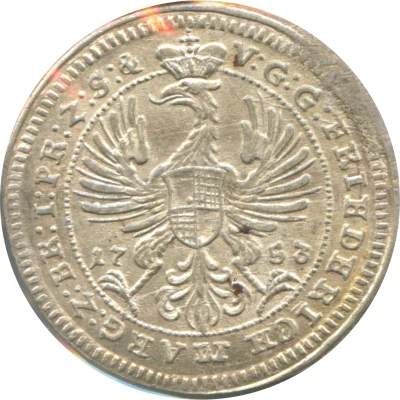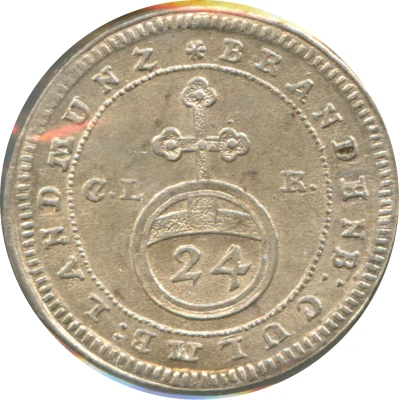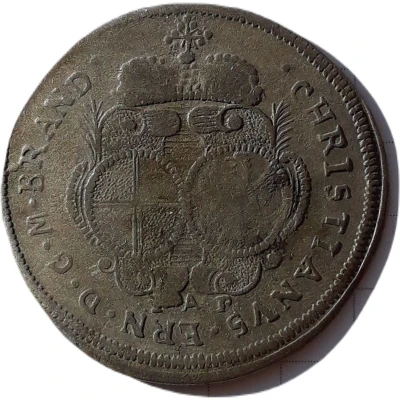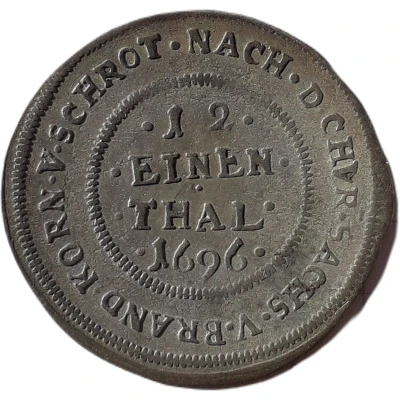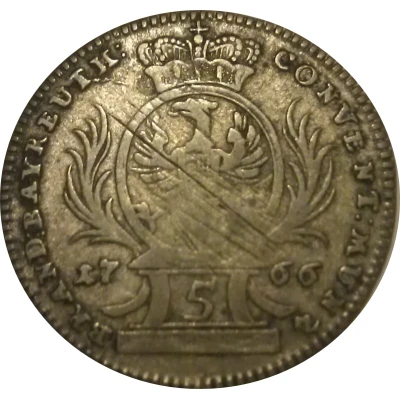
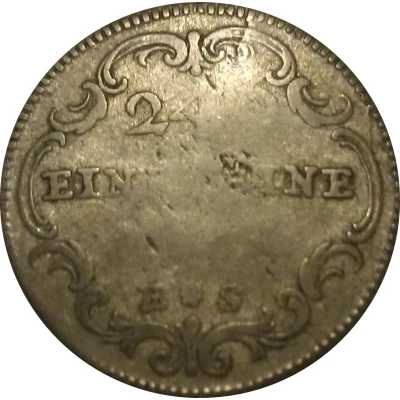

© mattei2b
5 Kreuzer - Frederick Christian
| Billon | 1.8 g | 21 mm |
| Issuer | Margraviate of Brandenburg-Bayreuth (German States) |
|---|---|
| Margrave | Frederick Christian (1763-1769) |
| Type | Standard circulation coin |
| Years | 1763-1768 |
| Value | 5 Kreuzer (1⁄24) |
| Currency | Thaler |
| Composition | Billon |
| Weight | 1.8 g |
| Diameter | 21 mm |
| Shape | Round |
| Orientation | Medal alignment ↑↑ |
| Demonetized | Yes |
| Updated | 2024-10-05 |
| Numista | N#111317 |
|---|---|
| Rarity index | 89% |
Reverse
Cartouche containing denomination and mintmasters initials.
Script: Latin
Lettering:
240
EINE FEINE
MARK
E*S
Edge
Reeded
Comment
Frederick Christian (July 17, 1708, Weferlingen - January 20, 1769, Bayreuth) was Margrave of the Principality of Brandenburg-Bayreuth from 1763 until his death.Upon his accession to the Margraviate of Brandenburg-Bayreuth, he attempted to restore his state's finances by drastically reducing the lifestyle of his court. Most of his resident artists, such as Karl von Gontard, left Bayreuth for the court of Frederick II of Prussia in Berlin. Almost all work on the castles and gardens was abandoned.
Margrave (from the German markgraf, which literally translates as "count of the march") was a title of nobility given to military leaders of the marches (or marks) in the Carolingian Empire, and later to certain princes of the Holy Roman Empire.
The French equivalent is marquis. The margraviate is the jurisdiction over which he has authority.
The marc was an eight-ounce weight used to weigh gold and silver. A currency containing an equivalent quantity of these metals was therefore also called "marc" or "mark" in Germanic countries.
The Holy Roman Empire, for its part, instituted a derivative of the Carolingian pound called the Köln Mark, equivalent to today's 233.8 g, the basis for the monetary weights of modern coins such as the thaler.
(Source: Wikipedia)
Interesting fact
One interesting fact about the 5 Kreuzer coin from the Margraviate of Brandenburg-Bayreuth is that it was minted during a time of great economic and political change in Germany. The coin was issued during the reign of Frederick Christian, who was the Margrave of Brandenburg-Bayreuth from 1763 to 1768. During his reign, there was a significant increase in trade and commerce, which led to the need for a new coinage system. The 5 Kreuzer coin was part of this new system and was designed to be a more practical and efficient form of currency for everyday transactions. Despite its small denomination, the coin was made of billon, a type of alloy that was commonly used for coins at the time, and weighed 1.8 grams, making it a substantial coin for its size. Today, the 5 Kreuzer coin is a rare and valuable collector's item, providing a glimpse into the economic and political history of Germany during the 18th century.
